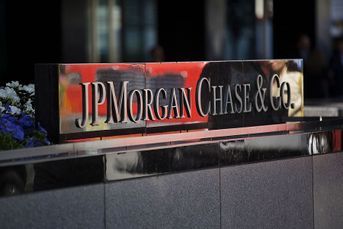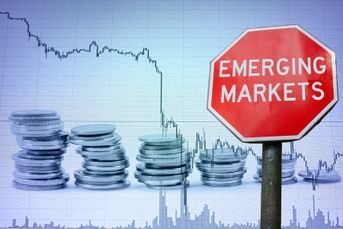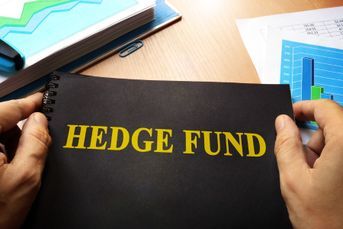The best and worst investments of 2014
These are the bets that saved or ruined portfolios in 2014. Beware: There's absolutely no guarantee they'll do the same thing next year.
To lose money in the markets in 2013, you had to really try. Three-quarters of the world’s stocks rose, by an average of 42%. The S&P 500 jumped 30%.
This year, the S&P’s up another 12%, but the market laid lots of traps for investors. You could have owned lots of energy stocks while the price of oil was plunging. Or, almost anything in Russia or Eastern Europe while the Ruble was in free fall. You could have easily panicked and sold out during the intense sell-offs in late January, October and December, then missed out on the market’s rebounds.
As the year comes to an end, Bloomberg.com tallied the year’s winning and losing investments. These are the bets that saved or ruined portfolios in 2014. Beware: There’s absolutely no guarantee they’ll do the same thing next year. All results reflect total returns as of Dec. 21.
• U.S. Large-Cap Stocks
Best: Skyworks Solutions (SWKS), +156%
Worst: Sprint Corp. (S), -61%
Semiconductor company Skyworks Solutions makes the components in mobile phones and other devices that connect them to wireless Internet. Last quarter, its sales were up 51% year-over-year. If you’d invested $10,000 on Jan. 1, it would be worth $25,630 today.
To hold onto subscribers, Sprint has aggressively cut prices on its mobile phone service. It reported a profit in just one of the past four quarters. If you’d invested $10,000 on Jan. 1, it would be worth $3,870 today.
Criteria: Of 493 stocks on U.S. exchanges with market capitalizations of more than $10 billion.
• International Stocks
Best: Hanergy Thin Film Power Group (566 HK), +249%
Worst: Arrium Limited (ARI AU), -89%
By buying up three U.S. and one German solar companies, the Hong Kong-based Hanergy is positioning itself as a leading maker of thin-film solar panels. If you’d invested $10,000 on Jan. 1, it would be worth $34,892 today.
The drop in global commodity prices hit Australia’s mining industry hard. Arrium’s 89% drop this year follows its 92% rise in 2013. If you’d invested $10,000 on Jan. 1, it would be worth $1,110 today.
Criteria: Of non-U.S. companies in the 3,017-stock FTSE All World Index, which includes developed and emerging markets. Excluded are stocks that didn’t trade the entire year, and those under the majority control of a holding company.
• Equity Mutual Funds
Best: Matthews India Fund (MINDX), +59%
Worst: Fidelity Select Energy Service Porfolio (FSESX), -22%
India elected a new prime minister in May, and its main stock index jumped 30% this year. Matthews’ top holding was Emami Ltd. (HMN), a maker beauty and health care products that’s up 57% year-to-date. If you’d invested $10,000 in MINDX on Jan. 1, it would be worth $15,920 today.
The Fidelity portfolio of energy service stocks suffered, along with many other energy sector funds, in a year that the price of a barrel of oil went from $111 to $59 in six months. If you’d invested $10,000 in FSESX on Jan. 1, it would be worth $7,810 today.
Criteria: Of 1,441 U.S.-based equity mutual funds with assets of $500 million or more. Excluded are closed-end funds and those that rely on leverage.
• Small-Cap Stock Funds
Best: William Blair Emerging Markets Small Cap Growth Fund (WESNX), +12.6%
Worst: Pacific Advisors Small Cap Value Fund (PASMX), -23%
Small-cap stocks struggled to repeat their outstanding performance in 2012 and 2013, when the Russell 2000 index rose 57%. Still, about two of every three small-cap funds are up for the year. If you’d invested $10,000 on Jan. 1 in WESNX, it would be worth $11,260 today. But $10,000 in PASMX would have turned into $7,663.
Criteria: Of 336 U.S.-based small-cap equity mutual funds with assets of at least $100 million and a median holding market capitalization of less than $3 billion. Excluded are closed-end funds and those that rely on leverage.
• Bond Funds
Best: Vanguard Extended Duration Treasury Index Fund (VEDTX), +45%
Worst: AllianceBernstein All Market Real Return Portfolio (ACMTX), -11%
Vanguard’s index fund invests in U.S. government bonds that don’t mature for 20 to 30 years. They did well in 2014, reflecting expectations that inflation will remain low for quite a while. If you’d invested $10,000 in VEDTX on Jan. 1, it would be worth $14,506 today.
The AllianceBernstein fund is classified by Bloomberg as a fixed-income fund because its main goal is inflation protection. But while its top holding was Treasury Inflation-Protected Securities, or TIPS, its other largest positions were equity shares of energy companies, which were hit hard by oil’s drop. If you’d invested $10,000 in ACMTX on Jan. 1, it would be worth $8,852 today.
Criteria: Of 776 open-ended fixed income mutual funds based in the U.S. with assets of $500 million or more.
• Commodities
Best: Coffee, +58%
Worst: Brent Crude Oil, -45%
Coffee prices soared after drought in Brazil, the world’s largest grower and exporter of coffee beans. It was one of the few commodities that rose as world economic growth slowed, especially in Europe and emerging markets. Oil’s slide was exacerbated by decisions by OPEC and Saudi Arabia not to cut production.
Criteria: Of 18 global commodities tracked by Bloomberg.
• Exchange-Traded Funds
Best: First Trust NYSE Arca Biotechnology Index Fund (FBT), +52%
Worst: Market Vectors Russia Small-Cap ETF (RSXJ), -52%
Biotech companies were popular with investors in 2014. The First Trust fund’s top holding was Incyte Corp., which primarily makes oncology drugs and is up 52% this year. If you’d invested $10,000 in FBT on Jan. 1, it would be worth $15,221 today.
Sanctions and the plunging price of oil put the Russian economy on life support. If you’d invested $10,000 in RSXJ on Jan. 1, it would be worth $4,793 today.
Criteria: Of 1,269 U.S.-based exchange-traded funds. Excluded are exchange-traded notes and ETFs that use leverage.
• Currency
Best: The U.S. Dollar
Worst: The Russian Ruble — or Bitcoin
Every major currency fell against the U.S. dollar in 2014. The euro dropped 11%, the Japanese Yen fell almost 12% and the British pound dropped 5.6%. Of non-U.S. currencies, the Indian Rupee did best, down 2.4% against the dollar.
Russia’s central bank raised a key interest rate to 17% on Dec. 16, and even that failed to stop the Russian currency’s plunge. The Ruble is ending 2014 down 45% against the dollar, shrinking a $10,000 investment on Jan. 1 into $5,513.
But there’s one currency that did worse in 2014, depending on whether you think virtual currencies are real money. A bitcoin has lost 58% of its value in U.S. dollars this year, and 72% since last November. If you’d invested $10,000 in bitcoin at the beginning of 2014, it would be worth $4,202 today.
Learn more about reprints and licensing for this article.








